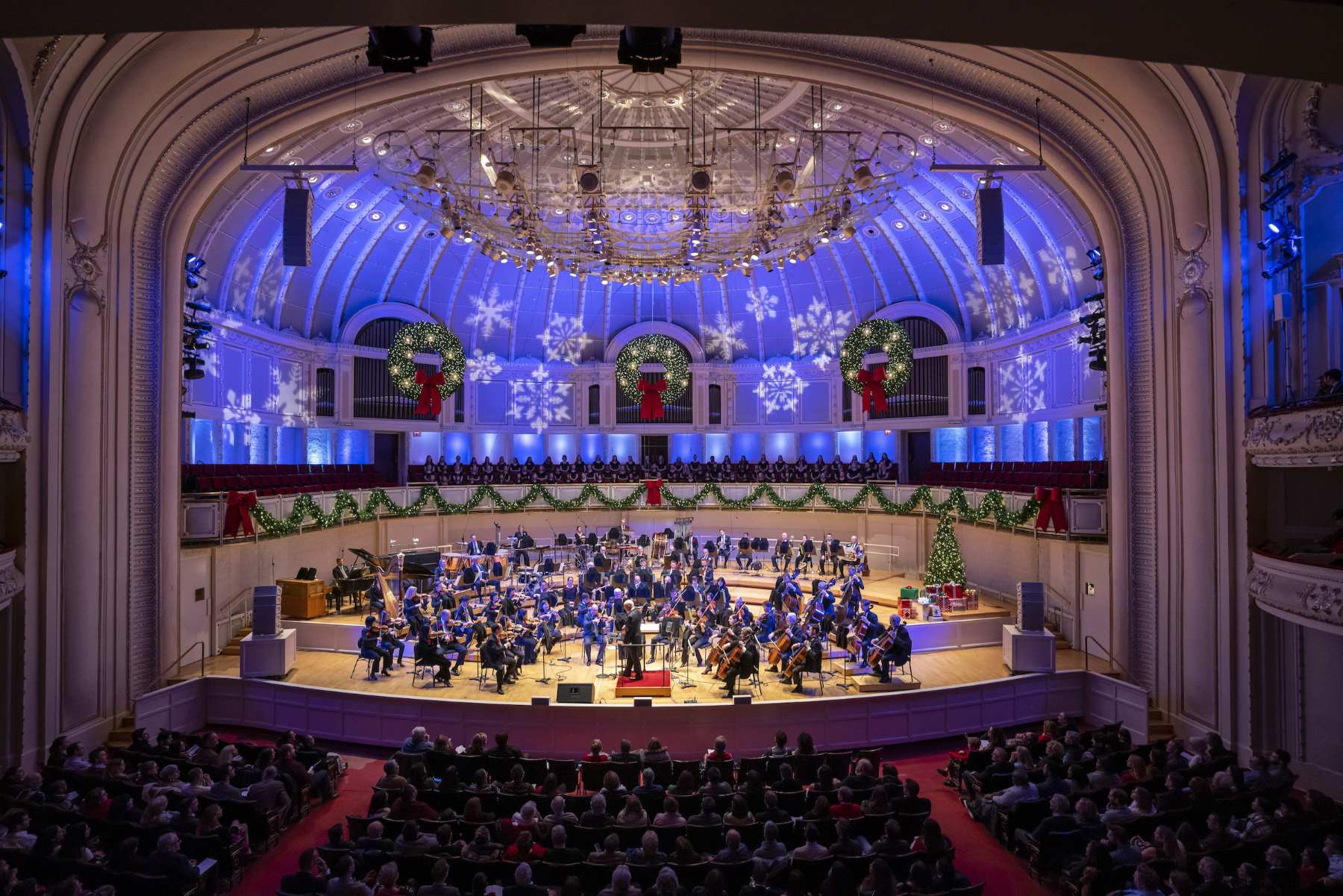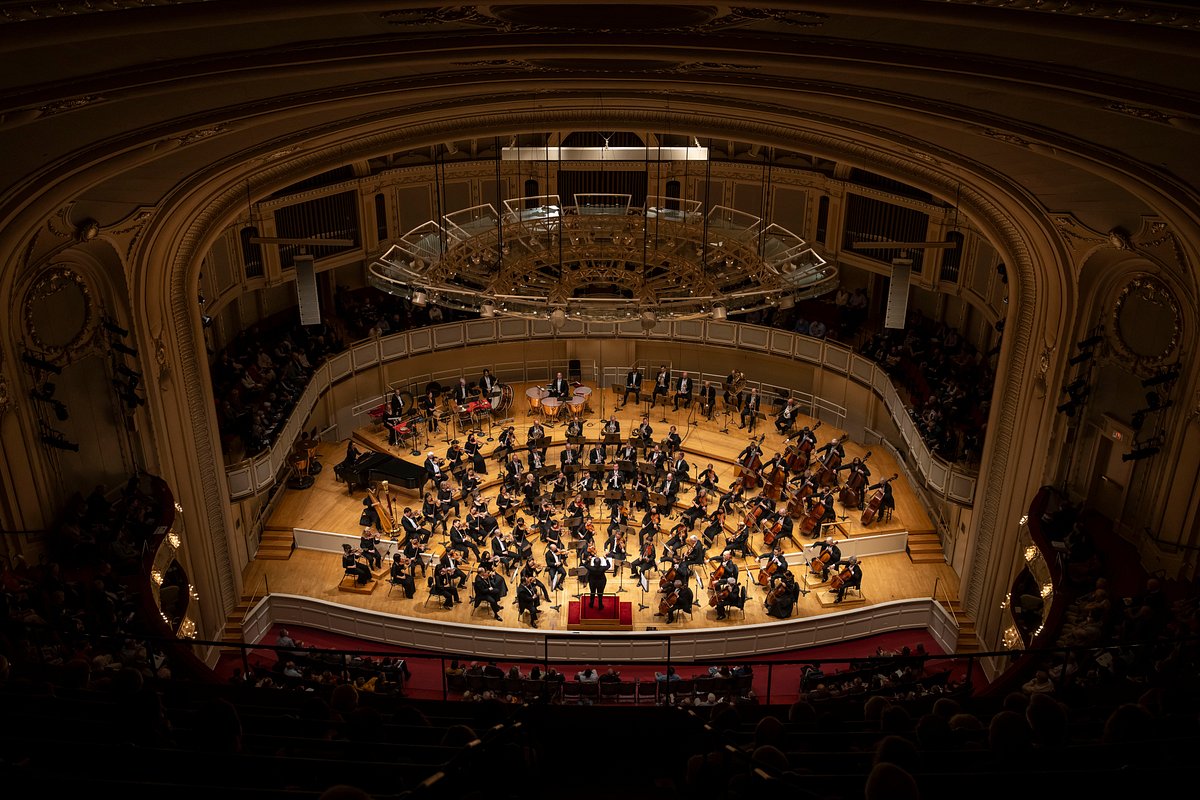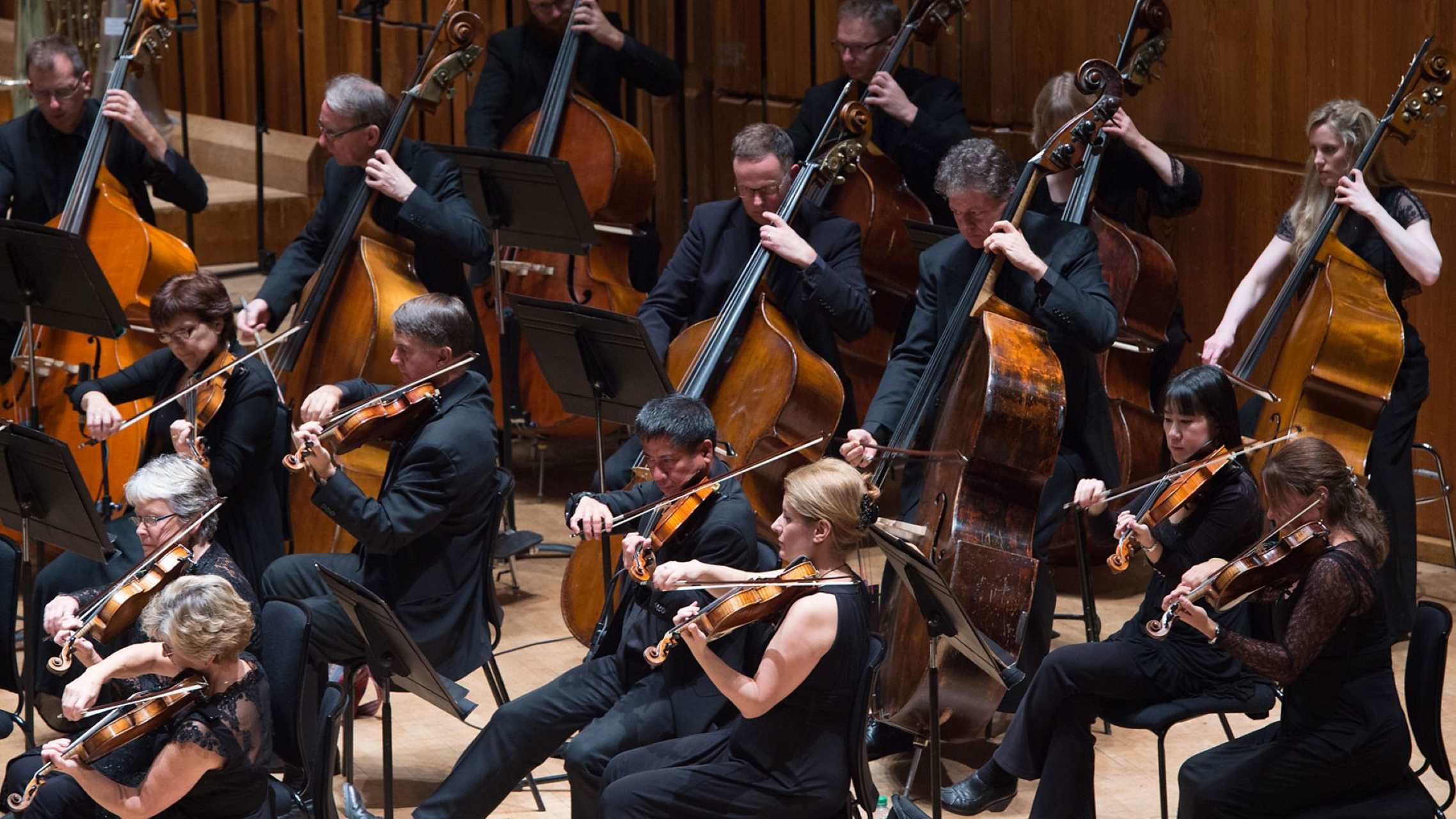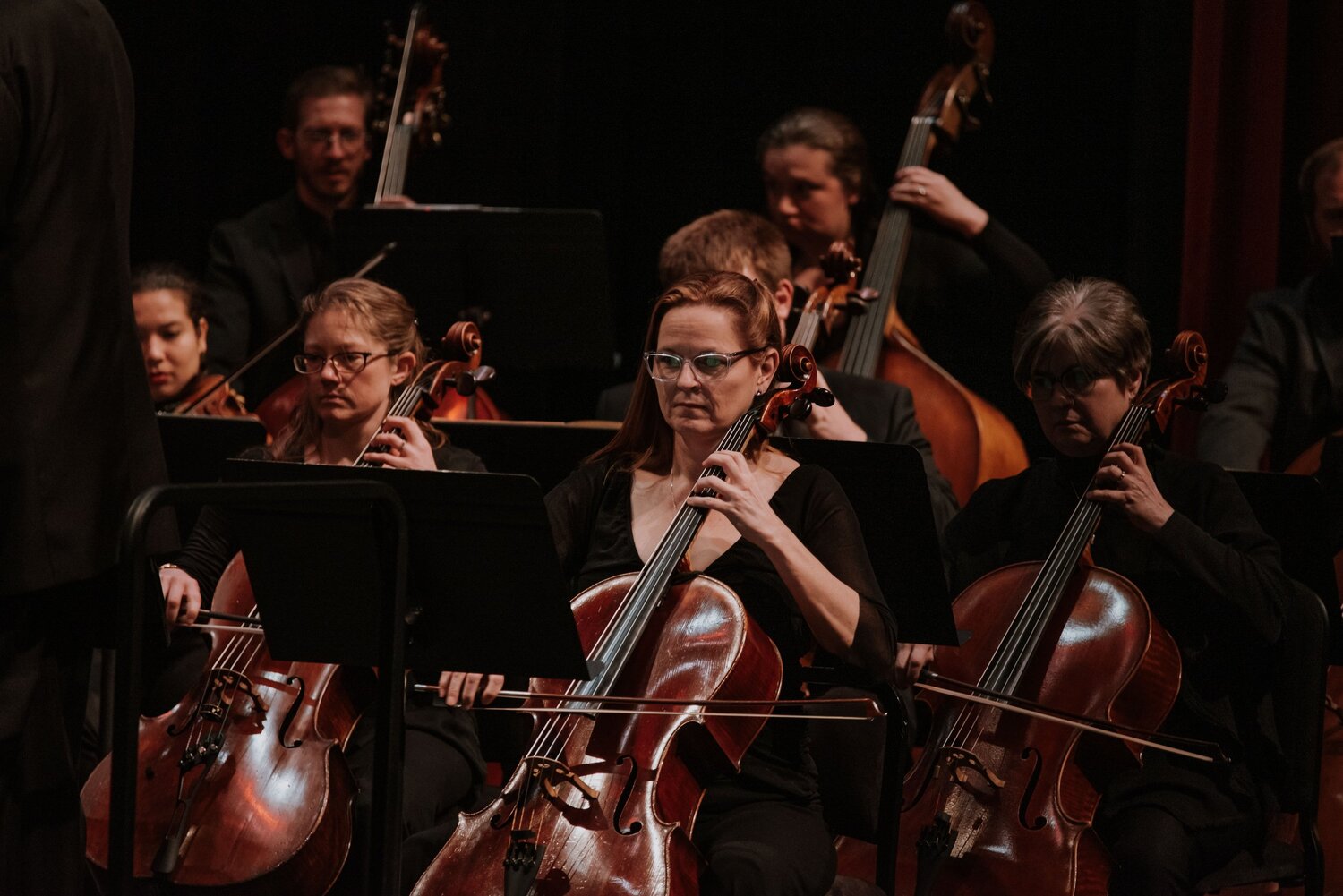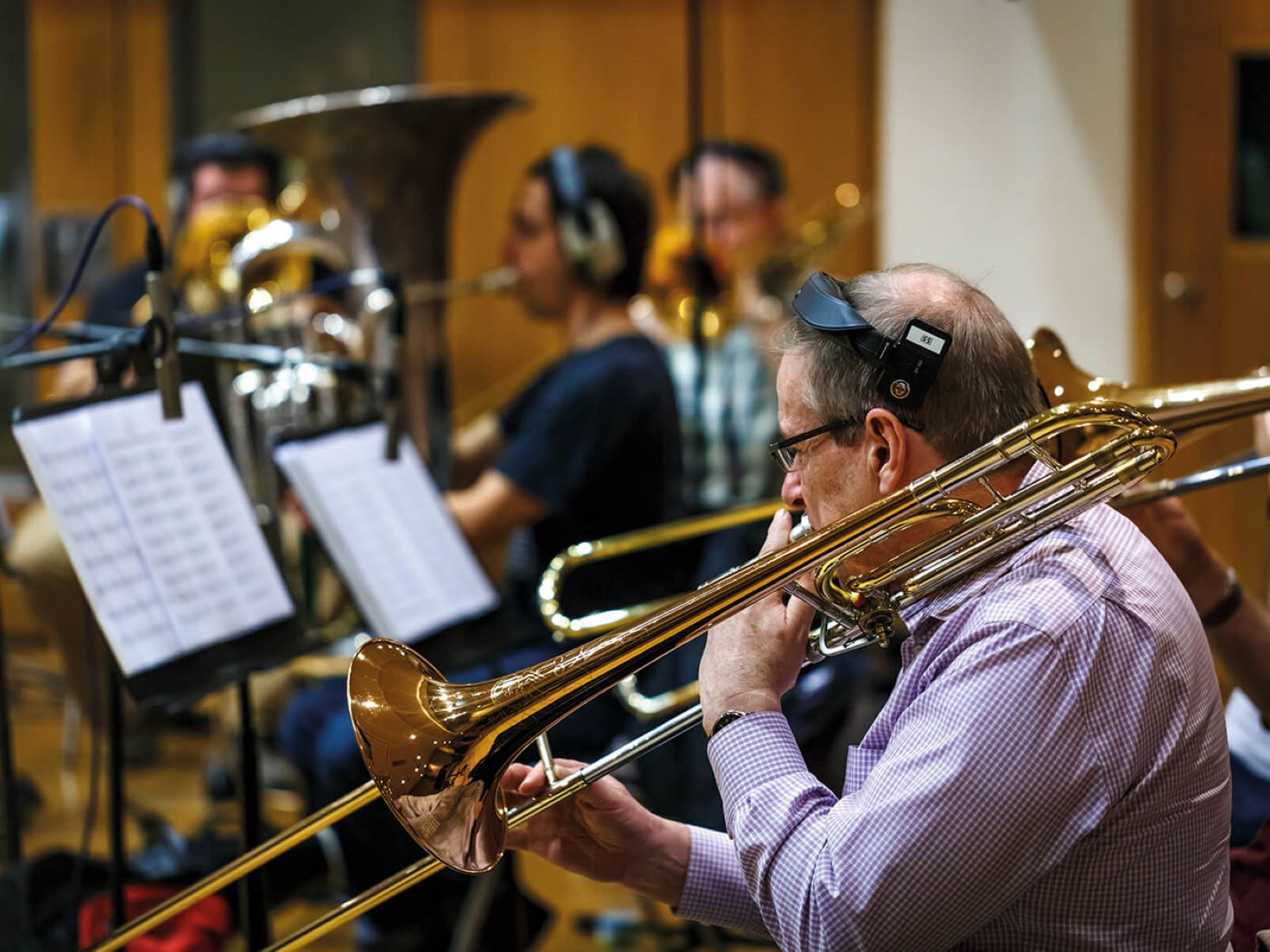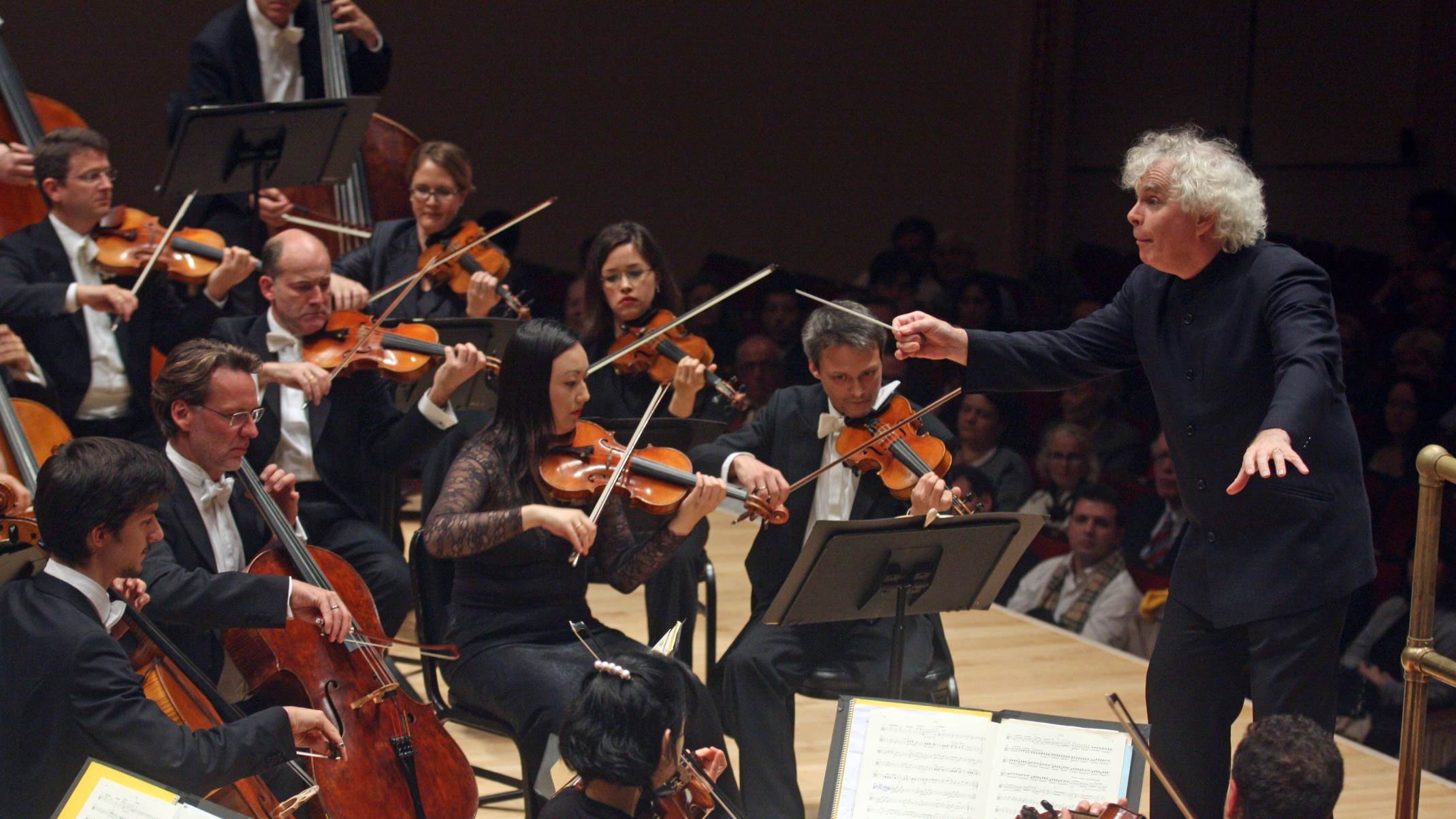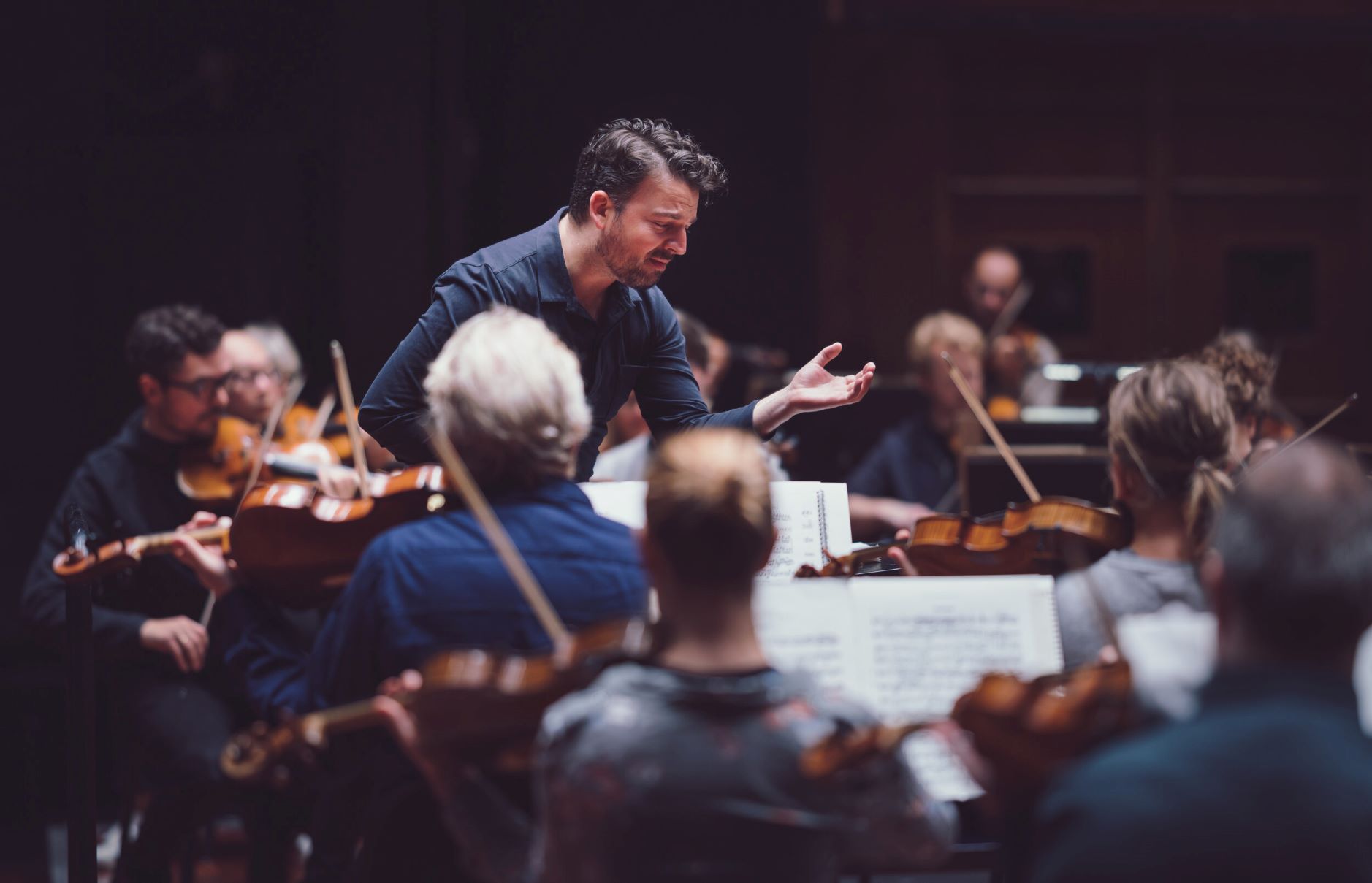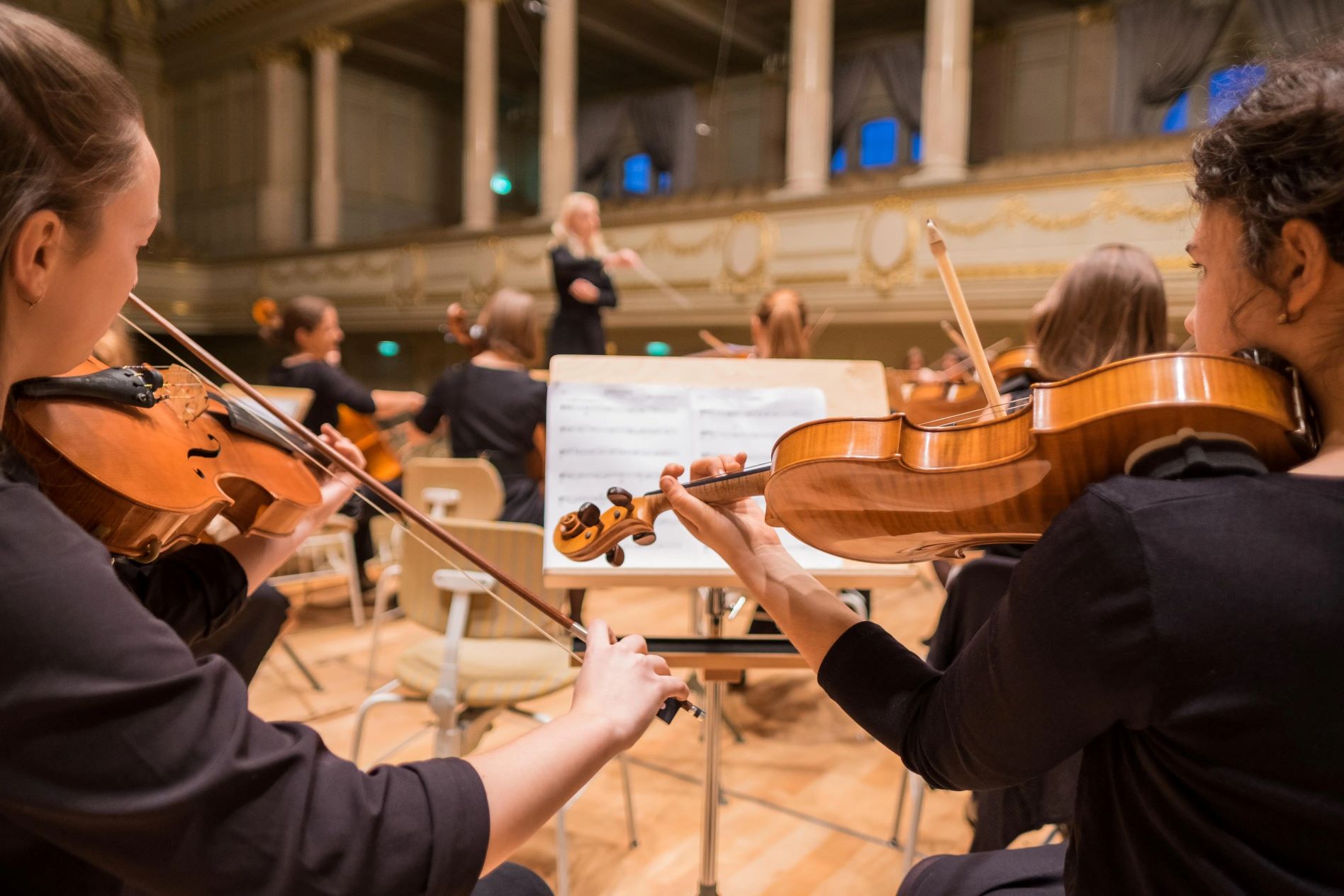

Symphony
What Is A Symphony Orchestra?
Modified: February 24, 2024
Discover the beauty and grandeur of a symphony orchestra. Experience the harmonious blend of instruments and talented musicians creating awe-inspiring musical masterpieces.
(Many of the links in this article redirect to a specific reviewed product. Your purchase of these products through affiliate links helps to generate commission for AudioLover.com, at no extra cost. Learn more)
Table of Contents
- Introduction
- Definition of a Symphony Orchestra
- History and Origins of Symphony Orchestras
- Role and Structure of a Symphony Orchestra
- Instruments in a Symphony Orchestra
- Conductor and Leadership in a Symphony Orchestra
- Repertoire of a Symphony Orchestra
- Performances and Concerts by Symphony Orchestras
- Importance and Impact of Symphony Orchestras
- Conclusion
Introduction
A symphony orchestra is a dynamic ensemble of highly skilled musicians who come together to create harmonious and captivating musical performances. It is a collective effort where multiple instrumentalists, under the guidance of a conductor, unite their talents to bring to life an extensive repertoire of symphonic compositions.
With its origins dating back several centuries, the symphony orchestra holds a significant place in the world of classical music. It is renowned for its grandeur, diversity of instruments, and the complex interplay of melodies, harmonies, and rhythms. Symphony orchestras have played a vital role in preserving and promoting classical music throughout history, captivating and inspiring audiences around the globe.
While the term “orchestra” refers to a group of musicians who perform together, a symphony orchestra is distinguished by its size, structure, and the specific type of music it performs. Unlike a chamber orchestra, which is more intimate and typically composed of a smaller number of musicians, a symphony orchestra consists of musicians from various sections such as strings, woodwinds, brass, and percussion, allowing for a greater range of musical possibilities.
In this article, we will delve into the fascinating world of symphony orchestras, exploring their history, structure, repertoire, and impact. We will also shed light on the crucial role of the conductor and the transcendent experience of attending a symphony orchestra performance. Whether you are an avid classical music lover or simply curious about the inner workings of these magnificent ensembles, join us as we embark on a journey to uncover the magic of the symphony orchestra.
Definition of a Symphony Orchestra
A symphony orchestra can be defined as a large ensemble of highly skilled musicians who perform symphonic compositions. It is a specialized type of orchestra that comprises different instrument sections, including strings, woodwinds, brass, and percussion. The term “symphony” refers to a musical composition written for an orchestra, typically consisting of multiple movements that showcase different melodies, harmonies, and rhythms.
What sets a symphony orchestra apart from other types of orchestras is its size, complexity, and diversity of instruments. While the exact number of musicians may vary, a typical symphony orchestra can consist of 70 to 100 musicians or even more, depending on the repertoire and venue. This large number of musicians allows for a rich and powerful sound that can fill concert halls and captivate audiences.
Each section within a symphony orchestra has its own specific instruments. The strings section, which is the largest, includes violins, violas, cellos, and double basses. The woodwinds section comprises instruments such as flutes, clarinets, oboes, and bassoons. The brass section consists of trumpets, trombones, French horns, and tubas. Lastly, the percussion section includes various drums, cymbals, timpani, and other auxiliary instruments.
To ensure synchronization and cohesion among the musicians, a symphony orchestra is led by a conductor. The conductor serves as both a musical guide and a leader who interprets the composer’s intentions, shapes the overall sound, and directs the musicians’ performances through gestures and cues. The conductor’s role is crucial in maintaining the unity and precision of the orchestra, facilitating seamless transitions between sections, and conveying the expressive qualities of the music.
Overall, a symphony orchestra is a remarkable ensemble that brings together a diverse group of talented musicians to create awe-inspiring musical experiences. Its sheer size, versatile instrumentation, and collaborative nature make it a compelling force in the world of classical music, enchanting audiences with its powerful performances and timeless compositions.
History and Origins of Symphony Orchestras
The origins of symphony orchestras can be traced back to the seventeenth and eighteenth centuries in Europe. The development of orchestras can be attributed to the rise of symphonic compositions, which grew in complexity and scope during the Baroque and Classical periods.
During the Baroque era, composers like Johann Sebastian Bach and George Frideric Handel began to incorporate orchestral elements into their compositions, giving birth to what would later become known as the symphony. However, it was during the Classical period that the symphony orchestra truly emerged as a distinct and influential ensemble.
One of the key figures in the development of the symphony orchestra was Joseph Haydn, an Austrian composer who became known as the “father of the symphony.” Haydn’s composition style, characterized by its use of sonata form, dynamic contrasts, and thematic development, laid the groundwork for future symphonic works.
As the popularity of symphonic compositions grew, the demand for larger and more diverse orchestras increased. Composers such as Wolfgang Amadeus Mozart and Ludwig van Beethoven pushed the boundaries of orchestral music and expanded the size and scope of the symphony orchestra.
In the nineteenth century, the symphony orchestra evolved further with the advent of the Romantic period. Romantic composers, including Richard Wagner, Pyotr Ilyich Tchaikovsky, and Gustav Mahler, sought to express deep emotions and narratives through their compositions. This led to the inclusion of even more instruments in the orchestra, enhancing its tonal palette and expressive capabilities.
The twentieth century witnessed further experimentation and innovation in symphonic music. Composers like Igor Stravinsky and Arnold Schoenberg challenged traditional tonality and introduced new forms and techniques into their compositions. This era also saw the emergence of modern and contemporary symphony orchestras, which continue to push boundaries and embrace a wide range of musical styles.
Today, symphony orchestras are found in cities around the world, performing a diverse repertoire that includes classic symphonies, contemporary works, film scores, and even crossover collaborations with popular artists. These orchestras serve as cultural institutions, preserving the rich heritage of classical music while also adapting to the changing tastes and preferences of audiences.
With a history spanning several centuries, symphony orchestras have become a cherished part of the cultural fabric of society. They continue to captivate and inspire audiences with their awe-inspiring performances, showcasing the mastery and artistic expression of the musicians and composers who have shaped the evolution of symphonic music.
Role and Structure of a Symphony Orchestra
A symphony orchestra plays a multifaceted role in the world of music. It serves as a platform for bringing together talented musicians, interpreting and performing a wide range of repertoire, and captivating audiences with breathtaking performances. The structure of a symphony orchestra is designed to accommodate the diverse instruments and musicians involved, ensuring a cohesive and harmonious sound.
The structure of a symphony orchestra can be divided into different sections, each comprising specific instruments. The string section is typically the largest and forms the core of the orchestra. It includes violins, violas, cellos, and double basses, and often provides the foundation and melodic framework for the music.
The woodwinds section consists of instruments such as flutes, oboes, clarinets, and bassoons. This section adds color, texture, and expressive qualities to the music through its rich and distinctive timbres.
Next is the brass section, which is composed of trumpets, trombones, French horns, and tubas. The brass instruments contribute power, brilliance, and majestic qualities to the overall sound of the orchestra.
The percussion section, consisting of various drums, cymbals, timpani, and other auxiliary instruments, adds rhythmic complexity, accents, and dynamic effects to the music.
Within the orchestra, there is a hierarchical structure to ensure coordination and unity. The leader of the string section is typically the concertmaster or first violinist, who plays a key role in interpreting the conductor’s instructions and leading the string players.
The conductor is the central figure in a symphony orchestra. Responsible for shaping the overall interpretation of the music, they have the authority to set the tempo, dynamics, and emotional expression of the performance. The conductor communicates their vision and guidance to the musicians through hand gestures, facial expressions, and body movements.
The musicians in a symphony orchestra follow the conductor’s lead and work together to create a cohesive and synchronized performance. Each player must attentively listen to their fellow musicians, follow the conductor’s cues, and blend their sound with others in their section and across different sections of the orchestra.
Additionally, symphony orchestras often collaborate with guest conductors, soloists, and composers, fostering creativity and bringing fresh perspectives to their performances. These collaborations add depth and variety to the repertoire and provide opportunities for musicians and audiences to experience new musical interpretations.
Overall, the structure of a symphony orchestra ensures that the various instrumental sections work together harmoniously, complementing one another to create a unified and expressive musical experience. It is this seamless coordination and collective effort that enables a symphony orchestra to bring the composer’s vision to life and evoke emotional responses from audiences around the world.
Instruments in a Symphony Orchestra
A symphony orchestra is a fascinating ensemble that brings together a diverse array of instruments, each contributing its own distinct sound and role in the overall orchestral texture. From the soaring melodies of the strings to the bold fanfares of the brass and the intricate rhythms of the percussion, the combination of these instruments creates a rich and dynamic sonic landscape.
The string section forms the foundation of the orchestra. It includes instruments such as the violin, viola, cello, and double bass. The violin is the highest-pitched and most numerous instrument in the orchestra, known for its expressive capabilities and virtuosic performances. The viola has a slightly deeper tone, while the cello and double bass provide a warm and robust low end.
The woodwind section encompasses instruments like the flute, oboe, clarinet, and bassoon. The flute has a bright and airy sound, while the oboe adds a distinctive and plaintive quality. The clarinet offers a versatile and expressive voice, capable of both lyrical melodies and agile runs. The bassoon, with its rich and resonant tone, provides a deep and sonorous foundation to the woodwind section.
The brass section consists of instruments such as the trumpet, trombone, French horn, and tuba. The trumpet is known for its bright and piercing sound, often used for triumphant fanfares and melodic lines. The trombone adds a rich and vibrant texture, capable of both bold statements and smooth glissandos. The French horn has a warm and noble timbre, often associated with lyrical melodies and harmonies. The tuba, the lowest-pitched instrument in the orchestra, adds depth and power to the brass section.
The percussion section includes a wide range of instruments, such as the timpani, snare drum, cymbals, and xylophone. The timpani, a set of large tuned drums, provides rhythmic support and adds dramatic impact to the music. The snare drum and cymbals are used for accentuating various passages and creating a vibrant and percussive atmosphere. The xylophone adds a sparkling and melodic quality, often used in delicate and playful orchestral passages.
In addition to these main sections, the symphony orchestra may also feature other instruments like the harp, piano, and occasionally, auxiliary percussion instruments. The harp adds a ethereal and magical quality to the sound, while the piano offers a versatile voice that can blend with the orchestra or stand out as a soloist. The auxiliary percussion instruments, such as the triangle, tambourine, and marimba, provide color, texture, and rhythmic effects in specific orchestral compositions.
It is the combination and interaction of these instruments that gives the symphony orchestra its diverse and expressive sonic palette. From the lush and melodic strings to the soaring brass and the rhythmic drive of the percussion, symphony orchestras create a captivating and immersive musical experience that transcends time and touches the deepest emotions of listeners.
Conductor and Leadership in a Symphony Orchestra
The conductor plays a vital role in a symphony orchestra, serving as the leader and guiding force behind its performances. It is their responsibility to interpret the composer’s intentions, shape the overall sound, and ensure the musicians work together in unity and harmony. The conductor’s leadership is essential in transforming a collection of talented musicians into a cohesive and expressive ensemble.
One of the primary roles of the conductor is to set the tempo, or the speed of the music. They use their baton and gestures to indicate the desired tempo, allowing the musicians to synchronize their playing and maintain a consistent pulse throughout the performance. The conductor’s interpretation of the tempo can significantly influence the mood and character of the music.
In addition to tempo, the conductor also controls the dynamics, or the volume levels, of the orchestra. They use their hands, facial expressions, and body movements to indicate the desired loudness or softness of the music. By shaping the dynamics, the conductor creates contrasting sections and brings out the subtleties of the composition, enhancing its emotional impact.
The conductor’s leadership is particularly crucial in coordinating and balancing the various sections of the orchestra. They ensure that the strings, woodwinds, brass, and percussion blend together effectively, allowing each instrument to be heard and contributing to the overall sound. This requires attentive listening, clear communication, and a deep understanding of each instrument’s capabilities.
During rehearsals, the conductor guides the musicians through the interpretation of the music. They provide guidance on phrasing, articulation, and expression, helping the ensemble bring out the nuances and intentions of the composer. The conductor may also make decisions on interpretive choices, such as when to emphasize certain passages or highlight specific musical themes.
Leadership in a symphony orchestra extends beyond the technical aspects of conducting. The conductor must inspire and motivate the musicians, fostering a sense of camaraderie and shared purpose. They create an environment that encourages artistic expression, creativity, and collaboration, allowing each musician to contribute their unique skills and talents.
The conductor’s role is also evident during live performances. They communicate with the musicians through non-verbal cues, using expressive gestures to indicate phrasing, dynamics, and entrances. Their gestures serve as a visual language that conveys the conductor’s musical vision and interpretation to the musicians in real-time.
Ultimately, the conductor’s leadership is indispensable in shaping the artistic vision of the symphony orchestra. They bring together the talents of the musicians, guide their performances, and provide a cohesive and unified direction. Through their expertise and passion for the music, the conductor influences the orchestra’s sound, elevating it to new heights and creating unforgettable experiences for both performers and audiences alike.
Repertoire of a Symphony Orchestra
The repertoire of a symphony orchestra is incredibly vast and diverse, encompassing centuries of classical music compositions. From timeless masterpieces to contemporary works, symphony orchestras perform a wide range of musical styles and genres, captivating audiences with their expressive interpretations and technical virtuosity.
One of the cornerstones of the symphony orchestra repertoire is the symphony itself. Symphonies are multi-movement compositions written for a full orchestra, generally consisting of four movements. They showcase the depth and breadth of a composer’s imagination, exploring various moods, melodies, harmonies, and rhythms. Symphonies by renowned composers such as Ludwig van Beethoven, Wolfgang Amadeus Mozart, and Pyotr Ilyich Tchaikovsky are among the most beloved and frequently performed works in the symphonic tradition.
Concertos are another prominent genre in the repertoire of symphony orchestras. Concertos feature a soloist or a group of soloists who perform alongside the orchestra, often highlighting their virtuosic abilities. The solo instrument can vary, ranging from piano and violin to cello, flute, and beyond. Concertos provide an opportunity for both soloists and orchestras to showcase their technical prowess and interpretive artistry. Famous examples include Beethoven’s Piano Concerto No. 5 (“Emperor”), Tchaikovsky’s Violin Concerto, and Rachmaninoff’s Piano Concerto No. 2.
Orchestral suites are another staple in the repertoire, consisting of a collection of individual movements taken from larger works such as operas, ballets, or incidental music. They demonstrate the diversity of styles and evoke a wide range of emotions. Suites like Igor Stravinsky’s “The Firebird” and Sergei Prokofiev’s “Romeo and Juliet” have become audience favorites, showcasing the rich tapestry of sound that symphony orchestras can produce.
Besides traditional classical music, symphony orchestras also explore contemporary compositions. Modern composers often write challenging and innovative works that push the boundaries of traditional orchestral sound. These compositions can incorporate experimental techniques, unconventional forms, and unique instrumentation, offering a fresh perspective on the symphony orchestra as a modern artistic medium.
Symphony orchestras also embrace the world of film music. Many orchestras perform concerts dedicated to iconic film scores, bringing beloved cinematic melodies to life in a live concert setting. From John Williams’ unforgettable themes in the “Star Wars” series to Hans Zimmer’s epic compositions for films like “Gladiator” and “The Dark Knight,” film music provides a unique and engaging experience for both avid classical music enthusiasts and movie lovers alike.
Furthermore, symphony orchestras frequently collaborate with contemporary artists, crossing genres and creating innovative musical experiences. These collaborations can range from fusion projects with jazz musicians and world music artists to performances with popular singers and bands. This interdisciplinary approach allows symphony orchestras to explore new musical landscapes and attract broader and more diverse audiences.
The repertoire of a symphony orchestra is ever-evolving, embracing the classics while embracing the new. With its immense variety and cultural significance, the music performed by symphony orchestras continues to inspire, enchant, and connect people through the power of sound and artistic expression.
Performances and Concerts by Symphony Orchestras
Performing concerts is at the heart of a symphony orchestra’s existence. Whether in grand concert halls, outdoor venues, or community spaces, symphony orchestras captivate audiences with their awe-inspiring performances and the immersive power of live music. These concerts offer unique opportunities for audiences to experience the transformative and emotional impact of symphonic compositions.
A symphony orchestra typically presents a season of concerts, with each concert featuring a specific program or theme. These programs often include a combination of well-known classics, lesser-known gems, and contemporary works. The repertoire can span centuries, showcasing the versatility and breadth of the symphony orchestra’s capabilities.
Orchestral performances are carefully curated to take audiences on a musical journey. The thematic selection of pieces can range from exploring a specific composer’s works to highlighting a particular style or historical period. This curation allows for a cohesive and immersive experience, where each piece complements and enhances the overall narrative of the concert.
Concerts by symphony orchestras feature prominently acclaimed soloists from around the world, collaborating with the orchestra for concerto performances. These soloists can be instrumentalists, vocalists, or even dancers, infusing the concert with their exceptional talents and interpretations. Their virtuosity and expressive artistry enhance the overall sonic experience and create breathtaking moments of musical brilliance.
While the traditional concert format follows a predetermined structure, with an intermission between the works, symphony orchestras also explore innovative concert formats to engage diverse audiences. They sometimes offer themed concerts, such as “family” or “pops” concerts, which are designed to be more accessible and appealing to a wider range of listeners, including children and newcomers to classical music.
Symphony orchestras also strive to connect with their communities through outreach and educational programs. They may offer pre-concert talks, where audiences can gain insights into the works being performed and learn about the historical and cultural context. Additionally, they organize concerts specifically tailored for schools and educational institutions, introducing young audiences to the magic of symphonic music and inspiring future generations of musicians and music lovers.
In recent years, symphony orchestras have embraced digital platforms to reach wider audiences. Live-streamed concerts, recordings, and online initiatives allow people from all corners of the world to enjoy symphonic performances from the comfort of their own homes. These digital efforts extend the orchestra’s reach beyond the confines of physical venues, enabling a global community to experience the power and beauty of symphonic music.
Concerts by symphony orchestras are transformative experiences, offering a communal gathering where people can immerse themselves in the beauty, emotion, and grandeur of live orchestral music. From the captivating melodies of the strings to the majestic crescendos of the brass, the symphony orchestra’s performances transport audiences to another realm, evoking a wide range of emotions and leaving a lasting impact.
Importance and Impact of Symphony Orchestras
Symphony orchestras hold great importance in the cultural fabric of society and have a profound impact on individuals and communities. They serve as guardians of classical music traditions, fostering artistic excellence, and providing transformative experiences for both performers and audiences.
One of the primary roles of symphony orchestras is preserving and promoting the rich heritage of classical music. They ensure that masterpieces by renowned composers like Beethoven, Mozart, and Bach continue to be heard and appreciated across generations. By performing these timeless works, symphony orchestras maintain a connection to the past while upholding the artistic legacy of the composers who have shaped the landscape of music.
Symphony orchestras also play a crucial role in commissioning and performing new works, supporting contemporary composers and advancing the evolution of classical music. This commitment to innovation and creativity ensures the continuous growth and relevance of the art form, expanding the boundaries of orchestral music to embrace new styles, forms, and techniques.
The impact of symphony orchestras extends beyond the concert hall. Their performances bring communities together, creating shared experiences that transcend cultural, social, and generational boundaries. Concerts by symphony orchestras provide an opportunity for people to connect, foster a sense of belonging, and cultivate a deeper appreciation for the arts.
Education and outreach programs are an integral part of the symphony orchestra’s impact. Through collaborations with schools, workshops, and interactive performances, orchestras introduce young people to the joys of classical music, nurturing the next generation of musicians, music lovers, and potential patrons. They inspire creativity, instill discipline, and foster a life-long love for the arts.
The economic impact of symphony orchestras should not be underestimated. They contribute significantly to the cultural tourism industry, attracting visitors from near and far to their performances and festivals. In addition, they play a vital role in supporting related industries such as hospitality, tourism, and local businesses, fostering economic growth and revitalizing communities.
Furthermore, symphony orchestras are ambassadors of their cities and nations. They represent cultural excellence, showcasing the artistic achievements of a region and enhancing its reputation on an international stage. They attract world-class musicians and foster collaborations with other orchestras, soloists, and conductors, fostering cultural exchange and strengthening global connections.
The emotional impact of symphony orchestras cannot be overstated. The music they create has the power to evoke a wide range of emotions – from joy to melancholy, from awe to contemplation. Listening to a live performance or being part of an audience can be a transcendent experience, touching deep within the human soul and providing solace, inspiration, and a sense of wonder.
In summary, symphony orchestras are essential pillars of artistic and cultural heritage, promoting classical music, inspiring audiences, fostering creativity, and enriching communities. They have a lasting impact on individuals and societies, shaping cultural identities, and ensuring that the timeless beauty of orchestral music continues to resonate for generations to come.
Conclusion
Symphony orchestras are not just ensembles of musicians; they are living embodiments of the power and beauty of classical music. As they come together, artists from diverse backgrounds unite to create an immersive and awe-inspiring experience that transcends time and speaks to the depths of human emotion.
From their origins in the Baroque and Classical periods to the present day, symphony orchestras have evolved and adapted, preserving traditions while embracing innovation. Their repertoire, consisting of symphonies, concertos, suites, and other genres, showcases the rich heritage of classical music and pushes the boundaries of artistic expression.
The leadership of the conductor guides the orchestra, shaping interpretations and ensuring cohesion among the musicians. The hierarchical structure and collaboration with soloists bring out the best in each player, creating dynamic and captivating performances that captivate audiences.
A symphony orchestra’s impact extends beyond the concert hall. They educate, inspire, and unite communities through outreach programs, collaborations, and educational initiatives. By nurturing creativity, fostering a love for music, and contributing to local economies, symphony orchestras become catalysts for cultural growth and development.
The importance of symphony orchestras cannot be emphasized enough. They preserve the rich legacy of classical music, provide platforms for contemporary composers, and serve as cultural beacons in their communities. Their performances transcend language and cultural barriers, evoking emotions and creating memorable experiences.
In a world where digital media dominates, symphony orchestras remind us of the magical connection between live music and human experience. Attending a symphony orchestra performance is a sensory journey that transports us, engages us, and leaves us forever changed.
The resilience and enduring impact of symphony orchestras should not be underestimated. They continue to captivate audiences, young and old, with their virtuosity, passion, and dedication to the art of orchestral music. Through their performances, symphony orchestras connect generations, bridge cultures, and celebrate the beauty of the human spirit.
In conclusion, symphony orchestras are pillars of artistic expression and cultural heritage – their music resonating in our hearts and souls. Let us cherish and support these remarkable ensembles, ensuring that the transformative power of symphonic music continues to enrich our lives for generations to come.


